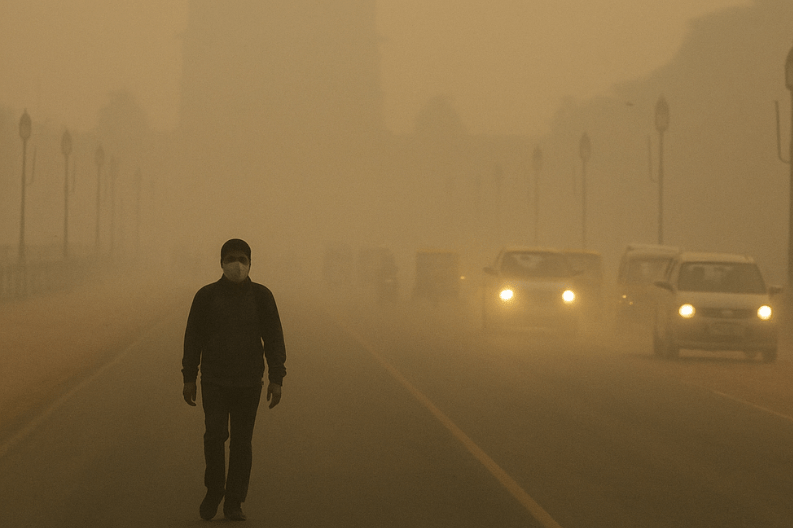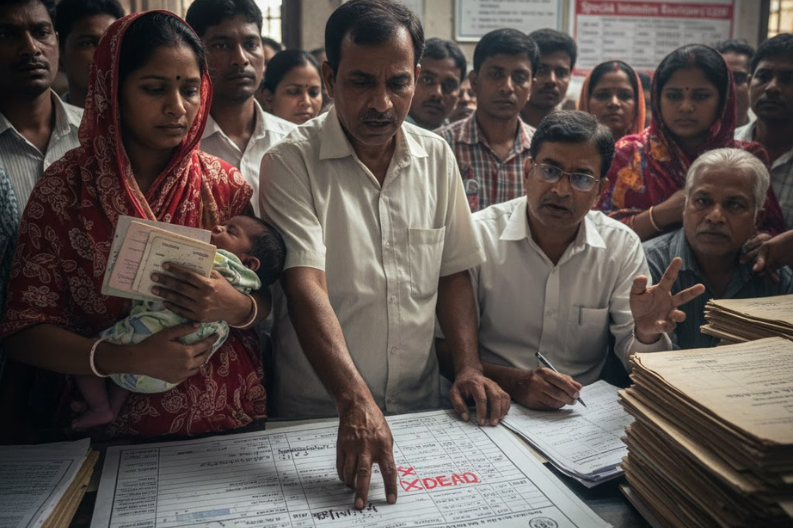Delhi woke up to a choking blanket of toxic smog on Friday as Delhi faces severe air pollution crisis . The city’s Air Quality Index (AQI) reached an alarming 727, according to the Swiss air monitoring platform IQAir. This marks one of the worst air quality readings of the season. The capital remains trapped in a mix of stubble-burning smoke, low wind speed, and winter temperature layers that hold pollutants close to the ground.
Over the last few days, the air quality in Delhi and the National Capital Region (NCR) has worsened dramatically. The AQI jumped from “poor” to “very poor” and finally to “hazardous.” On Thursday, the city’s average AQI was 311, but areas like Bawana and Mundka recorded much higher figures. Residents have reported eye irritation, breathing issues, and sore throats, with hospitals warning of a rise in respiratory cases.
To fight the pollution, the Delhi government launched several measures, such as using water sprinklers and anti-smog guns. However, officials admit that these steps have not brought much relief. The biggest concern remains PM2.5 tiny toxic particles that can enter the lungs and bloodstream, posing severe health risks. According to the India Meteorological Department (IMD), calm winds and low temperatures are preventing pollutants from dispersing, keeping the smog trapped for several more days.
The Central Pollution Control Board (CPCB) placed Delhi in the “red zone,” marking the air quality as extremely unsafe. IQAir also ranked Delhi among the most polluted cities in the world on Friday morning. However, experts predict a small improvement later in the day if wind speeds increase.
Across India, air quality remains a concern. Out of 254 monitored cities, Delhi ranked fourth in pollution levels. Rohtak in Haryana topped the list with an AQI of 348. Data from CPCB’s Sameer app showed that 32 of 38 Delhi monitoring stations reported “very poor” air quality, with PM2.5 levels far above the safe limit of 60 µg/m³.
The Air Quality Early Warning System confirmed that stubble burning remains a major cause. On Thursday, it accounted for 21.5% of the city’s pollution, rising sharply to 36.9% by Friday. Satellite imagery revealed 94 farm fire incidents in Punjab, 13 in Haryana, and 74 in Uttar Pradesh. Experts said that the smoke from these fires combines with Delhi’s local emissions, worsening the smog.
Vehicle emissions added another 16.2% to the pollution. With millions of cars, buses, and trucks on the road daily, transport remains one of the top contributors. Industrial emissions, construction dust, and waste burning also continue to add to the city’s toxic air mix.
Meanwhile, citizens are growing frustrated with the situation. On Thursday, about 80 people gathered at Jantar Mantar to protest against the government’s failure to control pollution. Environmentalists, scientists, and students joined the demonstration, demanding stronger policies and stricter enforcement. Organizations such as Scientists for Society and the Campaign for Right to Public Health led the protest.
Experts have repeatedly warned that without controlling farm fires, vehicle pollution, and industrial emissions, Delhi’s air will remain hazardous throughout winter. Doctors have urged people to wear masks outdoors, avoid early morning walks, and use air purifiers indoors. Children, the elderly, and people with asthma or heart conditions are particularly at risk.
Environmental scientists are also calling for long-term solutions. They emphasize shifting to clean energy, promoting electric vehicles, and ensuring better crop management systems to prevent stubble burning. Coordination between Delhi and neighboring states like Punjab, Haryana, and Uttar Pradesh is crucial to tackle the root causes of the crisis.
The situation demands urgent action. Delhi cannot rely on temporary measures anymore. Policymakers, industries, and citizens must work together to reduce emissions and restore breathable air. The future of millions depends on collective responsibility and sustained effort.
In conclusion, Delhi faces severe air pollution crisis, highlighting an urgent need for stronger laws, regional cooperation, and public awareness. Only through consistent action can the city hope to overcome this annual battle with toxic air and ensure a safer environment for all. 🌫️



